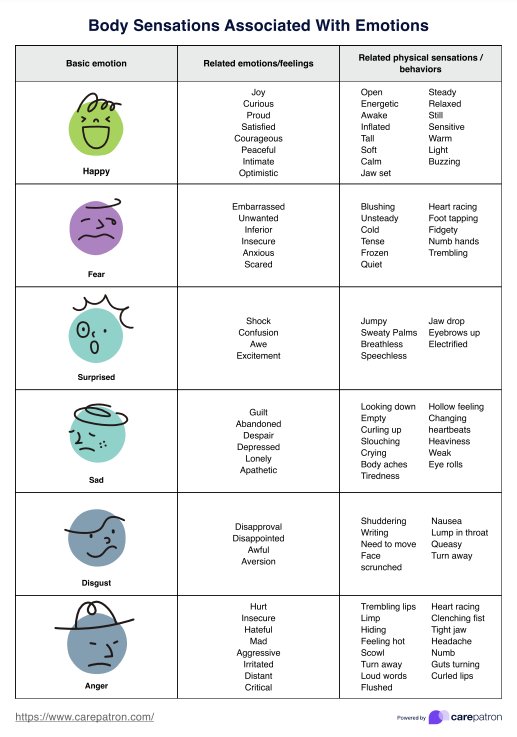Emotion-related body sensations are physical manifestations that accompany an emotional experience. These bodily changes can include increased heart rate, muscle tension, or even changes in posture, all triggered by various emotions.

Body Sensations Associated With Emotions PDF
Enhance emotional awareness and improve coping skills with our Body Sensations Associated With Emotions PDF template.
Body Sensations Associated With Emotions PDF Template
Commonly asked questions
You physically feel emotions because emotional experiences are processed in the brain and through the body, activating the autonomic nervous system. This connection between mind and body causes physical sensations, such as a racing heart or tense muscles, during emotional responses.
The physical sensations of positive emotions often include a feeling of warmth, relaxation, or lightness in the body. These sensations are part of the body's emotional response, reflecting joy, contentment, or excitement.
EHR and practice management software
Get started for free
*No credit card required
Free
$0/usd
Unlimited clients
Telehealth
1GB of storage
Client portal text
Automated billing and online payments











